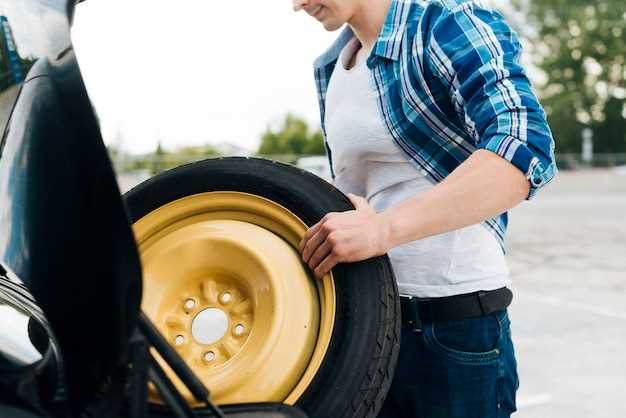
Tire rotation is an essential part of vehicle maintenance that plays a crucial role in ensuring the longevity and performance of your tires. Regular rotation helps to manage tire wear effectively, allowing for a more even distribution of tire pressure, traction, and overall durability. Understanding when and why to rotate your tires can lead to better handling, enhanced fuel efficiency, and ultimately, a safer driving experience.
The timing of tire rotation is influenced by several factors, including the type of vehicle, the tire brand, and driving habits. Most automotive experts recommend rotating tires every 5,000 to 7,500 miles to keep them in optimal condition. However, if you frequently drive in adverse conditions or have a performance vehicle, you may need to adjust this schedule. Frequent inspection of your tires will help you identify uneven wear patterns, which serve as a clear indicator that rotation is necessary.
In addition to timing, there are specific reasons for tire rotation that every vehicle owner should consider. Front tires often experience more wear due to the steering and weight they bear, leading to premature degradation compared to rear tires. Regularly rotating your tires counteracts this imbalance, prolonging the lifespan of all four tires and improving overall drivability. By facilitating even tire wear, you’ll ensure that your vehicle maintains consistent handling and enhances your safety on the road.
Optimal Intervals for Tire Rotation Based on Vehicle Type

Regular tire rotation is essential for maintaining even wear across all tires, ensuring safety and performance. The optimal intervals for tire rotation can vary depending on the type of vehicle you own. Understanding these intervals helps extend tire life and improve vehicle handling.
For standard passenger cars, it is generally recommended to rotate tires every 5,000 to 7,500 miles. This frequency allows for even wear, as front tires often handle more steering forces and can wear faster than rear tires.
SUVs and light trucks typically experience different tire wear patterns due to their weight and design. Therefore, it is advisable to rotate their tires every 5,000 to 8,000 miles. This helps mitigate more rapid wear on the front tires, particularly when used for heavy hauling or off-road conditions.
Performance vehicles, which often have specialized tires, may require more frequent rotations, typically every 3,000 to 5,000 miles. These tires tend to wear unevenly due to aggressive driving and high-speed cornering.
Electric vehicles (EVs) can also show different wear characteristics due to instant torque delivery and weight distribution. It’s recommended to adjust tire rotation intervals to approximately every 6,000 to 8,000 miles to counteract uneven wear patterns.
In conclusion, adhering to the recommended tire rotation intervals is crucial for all vehicle types. Regular rotations not only enhance tire longevity but also optimize overall vehicle performance by ensuring all tires wear evenly.
Identifying Uneven Tire Wear Patterns and Their Causes

Understanding uneven tire wear patterns is essential for maintaining vehicle safety and performance. Uneven wear can indicate underlying issues that require immediate attention. The most common patterns include inner or outer edge wear, center wear, and patchy wear, each with specific causes.
Inner or outer edge wear often signifies misalignment or improper inflation. When tires are not aligned correctly, one side experiences more contact with the road, leading to excessive wear in that area. Regular tire rotation can help mitigate this issue, but correcting alignment is crucial for long-term tire health.
Center wear is generally a result of overinflation. When tires are inflated too much, the center portion makes more contact with the road, causing rapid wear. To prevent this, always adhere to the manufacturer’s recommended tire pressure and check it regularly.
Patchy wear, characterized by random bald spots, can be attributed to various issues such as suspension problems, inconsistent inflation, or manufacturing defects. These irregularities can result from worn-out shock absorbers or struts. Addressing these issues promptly can improve tire performance and extend their lifespan.
Regular inspections and timely tire rotations are vital for identifying these wear patterns early. By understanding the causes of uneven wear, drivers can take proactive steps to ensure their tires remain in optimal condition, improving safety and enhancing the driving experience.
Impact of Tire Rotation on Vehicle Performance and Safety
Tire rotation is a crucial maintenance practice that significantly impacts vehicle performance and safety. Regularly rotating tires ensures even wear, which directly influences the handling and stability of the vehicle. When tires wear evenly, they maintain optimal traction on various road surfaces, reducing the risk of accidents due to loss of grip.
An unrotated tire often faces uneven wear patterns, leading to compromised performance. For example, front tires may wear out faster than rear tires in front-wheel-drive vehicles, which can cause steering issues and increased stopping distances. Conversely, rear tires that are less worn may not provide adequate support during cornering, increasing the likelihood of skidding or losing control.
Additionally, tire rotation contributes to fuel efficiency. Unevenly worn tires can create drag and resistance, requiring the engine to work harder to maintain speed. By rotating tires and ensuring they wear evenly, drivers can achieve better fuel economy, providing both financial savings and reduced environmental impact.
Furthermore, maintaining properly rotating tires is vital for enhancing the lifespan of the tires themselves. Tires that are rotated regularly tend to last longer, ultimately saving on replacement costs and ensuring that vehicles remain in top condition for longer durations.
In summary, tire rotation plays a fundamental role in maintaining vehicle performance and ensuring safety. By promoting even wear, it enhances traction, improves fuel efficiency, and extends tire life, making it an essential aspect of vehicle maintenance that should not be overlooked.



